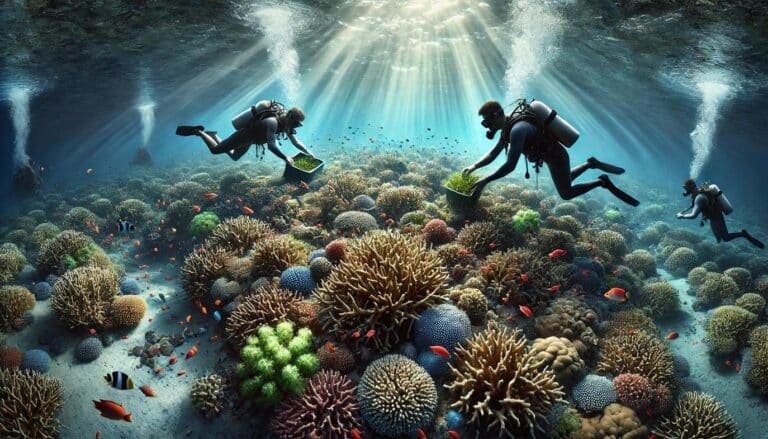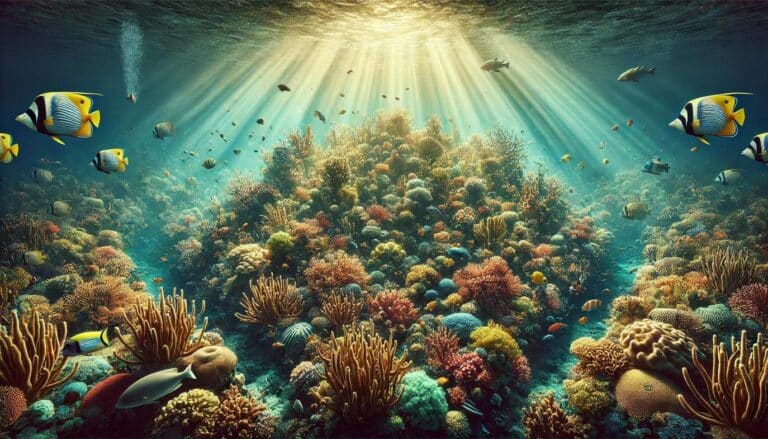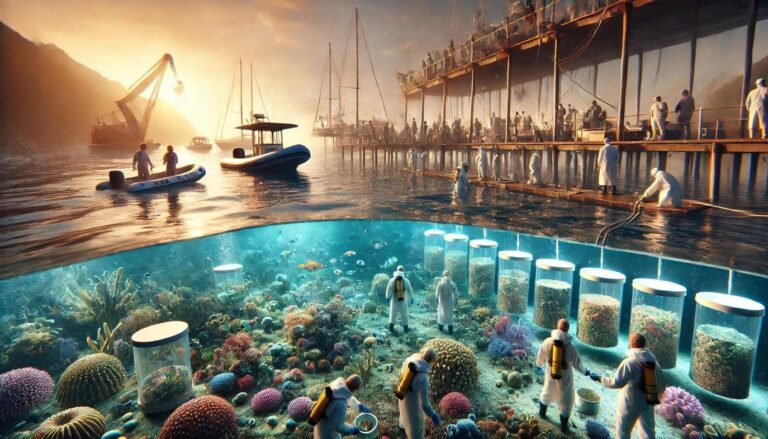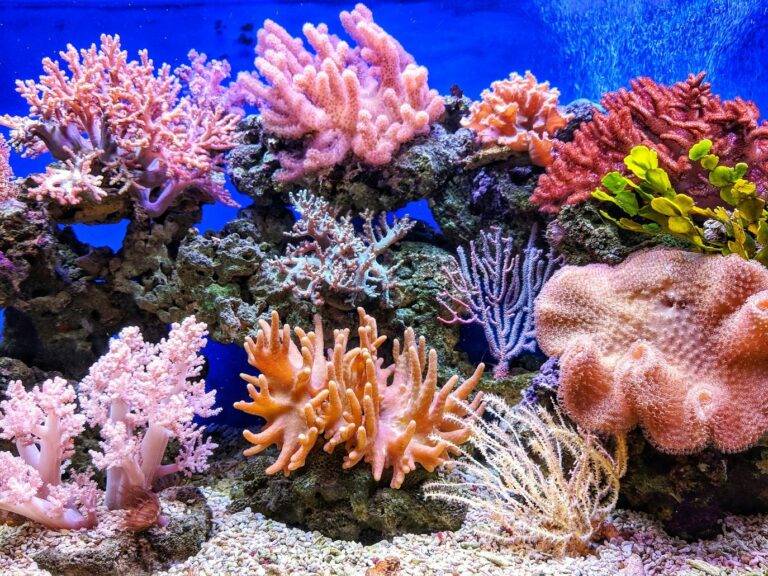Coral reefs are among the most biologically diverse marine environments on the planet, supporting thousands of species across shallow tropical seas. Their intricate structures offer shelter, breeding grounds, and feeding areas for countless marine organisms. Yet, these critical ecosystems have come under severe threat. These critical ecosystems have come under severe threat from several factors, including:
- Climate change
- Pollution
- Destructive fishing practices
- Coastal development
These have all contributed to the rapid decline of coral cover across the globe. Coral aquaculture, the practice of cultivating corals in controlled environments for reintroduction into the wild, has emerged as one response to this ongoing crisis. It represents a focused approach that allows damaged reefs a chance to rebuild and recover.
The controlled cultivation of coral fragments and their strategic placement onto degraded reef areas hold promise for restoring reef health and biodiversity, offering a pathway toward the stabilization and renewal of these fragile ecosystems.

Easing the Pressure on Wild Coral Reefs
Harvesting live corals from reefs for restoration projects or commercial use has long contributed to the degradation of already stressed marine environments. By providing an alternative supply source, coral aquaculture helps reduce this direct extraction.
Growing coral in nurseries, whether in ocean-based or land-based tanks, provides a steady and sustainable stream of coral fragments for reef restoration or the aquarium trade. This practice removes the incentive to collect living specimens from vulnerable reefs. Understanding how coral aquaculture works is key to recognizing this benefit.
Corals are propagated in controlled settings and grown under monitored conditions until they are suitable for transplantation. This approach significantly cuts down on the demand for wild colonies and leaves natural reefs undisturbed, allowing them a greater chance to recover and sustain themselves without additional strain.
Rebuilding the Underwater Cities for Marine Life
The three-dimensional structure of coral reefs creates a complex habitat for a wide variety of marine species. When corals die off, their skeletons may persist temporarily, but over time, they erode and collapse, leading to habitat loss. Coral aquaculture introduces living coral back into these deteriorating systems, promoting the regrowth of reef frameworks that support a wide variety of marine life, including:
- Fish
- Crustaceans
- Mollusks
- Countless other creatures
With restored coral growth comes the return of ecological functions, feeding behaviors, breeding, and interspecies interactions that depend on the structure of the reef. Different coral species have unique shapes and growth forms, which, when strategically reintroduced, contribute to rebuilding the varied topography reefs need.
This physical complexity is central to the survival of many reef dwellers, some of which cannot exist without certain coral types or arrangements. Aquaculture offers a way to design restoration efforts with these needs in mind, cultivating species with the best potential for survival and compatibility with existing marine life.

Strengthening Our Natural Coastal Defenses
Healthy coral reefs act as natural barriers, absorbing wave energy and reducing shoreline erosion. This function protects coastal communities from storm surges, high tides, and sea-level rise. When reefs degrade, their ability to mitigate wave force declines, leaving coastlines more vulnerable.
Coral aquaculture helps rebuild this natural defense. By restoring coral growth along reef edges and other strategic locations, aquaculture projects support the physical integrity of the reef system. Over time, as new coral colonies grow and spread, the restored reefs regain their capacity to blunt wave energy. This benefit extends not only to marine life but also to people living near coasts, whose homes, agriculture, and infrastructure rely on stable shorelines.
By focusing on fast-growing and resilient coral species, aquaculture can accelerate the formation of these protective structures and buy time for slower-growing species to return.
Supports Biodiversity Recovery
Coral reefs are often referred to as the rainforests of the sea for good reason; they house an extraordinary array of life. The decline of coral reefs triggers cascading effects on the entire marine food web, reducing the abundance and diversity of reef-dependent species. Coral aquaculture plays a direct role in halting and reversing this trend.
Aquaculture restores coral coverage, allowing marine populations to recolonize areas previously stripped of their ecological richness. Over time, these restored environments attract a larger and more diverse array of organisms. This includes everything from algae-eating fish that keep coral surfaces clean to top predators that help maintain a balanced ecosystem.
Each reintroduced coral colony becomes a seed for broader ecological renewal. The careful selection of coral genotypes and species maintains genetic diversity, which is crucial for the long-term health of the reef under changing environmental conditions. The ability to reintroduce not only a large number of corals but also various coral types supports a more complete recovery of marine biodiversity.
Pioneering the Future with Resilient ‘Super Corals’
Coral aquaculture offers more than just practical restoration; it also provides a platform for scientific discovery. Controlled coral nurseries give researchers the ability to test different growing conditions, stress factors, and coral strains. This has led to important advances in understanding coral resilience to heat, acidification, and disease.
Scientists are now experimenting with the selective propagation of corals that exhibit greater tolerance to rising temperatures and other stressors. These “super corals” could be the key to enhancing the resilience of reefs against the ongoing impacts of climate change. Field deployment of aquacultured corals offers insight into which genotypes thrive under real-world conditions and which combinations lead to better survival outcomes. The knowledge gained from aquaculture programs feeds directly into more effective restoration strategies and policy planning.
By observing how different coral species perform when reintroduced into natural environments, researchers can refine techniques to support lasting recovery. Coral aquaculture enables a cycle of cultivation, testing, and adaptation that meets both immediate restoration needs and long-term resilience goals.
Builds Community Engagement and Education
Coral aquaculture brings people into direct contact with reef restoration, turning scientific efforts into shared public missions. Many aquaculture programs partner with local communities, training residents to manage nurseries, monitor reef health, and participate in planting coral fragments. This hands-on involvement fosters a deeper understanding of marine conservation and creates a tangible connection between people and the ocean environment.
Educational outreach built around aquaculture projects can change perceptions about the importance of reef ecosystems. Participating in or observing coral cultivation efforts often inspires tourists, students, and policymakers to support broader environmental initiatives. Economic opportunities also arise from these programs, including employment in:
- Coral farming and nursery management
- Eco-tourism and dive operations
- Scientific support and research roles
These benefits build a sense of ownership and responsibility toward marine stewardship.

A Proactive Strategy for Marine Ecosystem Recovery
Coral aquaculture is more than just a method for growing corals; it is a critical, multi-faceted strategy for active reef restoration. By reducing pressure on wild coral populations, rebuilding structural habitats, and enhancing coastal protection, this practice provides a direct response to the degradation of our marine ecosystems.
Furthermore, it accelerates biodiversity recovery, supports vital research into coral resilience, and fosters community engagement in conservation. As climate change continues to threaten reefs worldwide, sustainable coral farming stands out as a proactive and essential tool in the global effort to preserve our oceans for future generations.
Frequently Asked Questions About Coral Aquaculture
What is coral aquaculture?
Coral aquaculture is the process of farming corals in controlled environments, such as land-based tanks or underwater nurseries. These cultivated corals are then strategically transplanted onto degraded reefs to help restore their structure and biodiversity, or they are supplied to the aquarium trade to reduce the harvesting of wild corals.
How does coral farming help the ocean?
Coral farming contributes to marine ecosystem recovery in several ways: it restores physical habitats for countless marine species, reduces pressure on wild coral populations, enhances coastal protection by rebuilding natural wave barriers, and supports the return of biodiversity to damaged reef areas.
Can we restore dead coral reefs?
Yes, to an extent. While it cannot reverse the damage from large-scale events like mass coral bleaching overnight, reef restoration through coral aquaculture can rebuild the foundational structure of a reef. By transplanting resilient, lab-grown corals onto dead or dying reef skeletons, we can kick-start the natural recovery process and re-establish a functioning ecosystem over time.
What are “super corals”?
“Super corals” is a term for coral strains that have shown a natural resilience to environmental stressors like rising ocean temperatures and acidification. Coral aquaculture facilities allow researchers to identify, study, and selectively breed these resilient corals, with the goal of transplanting them to create future reefs that are better equipped to survive in a changing climate.




